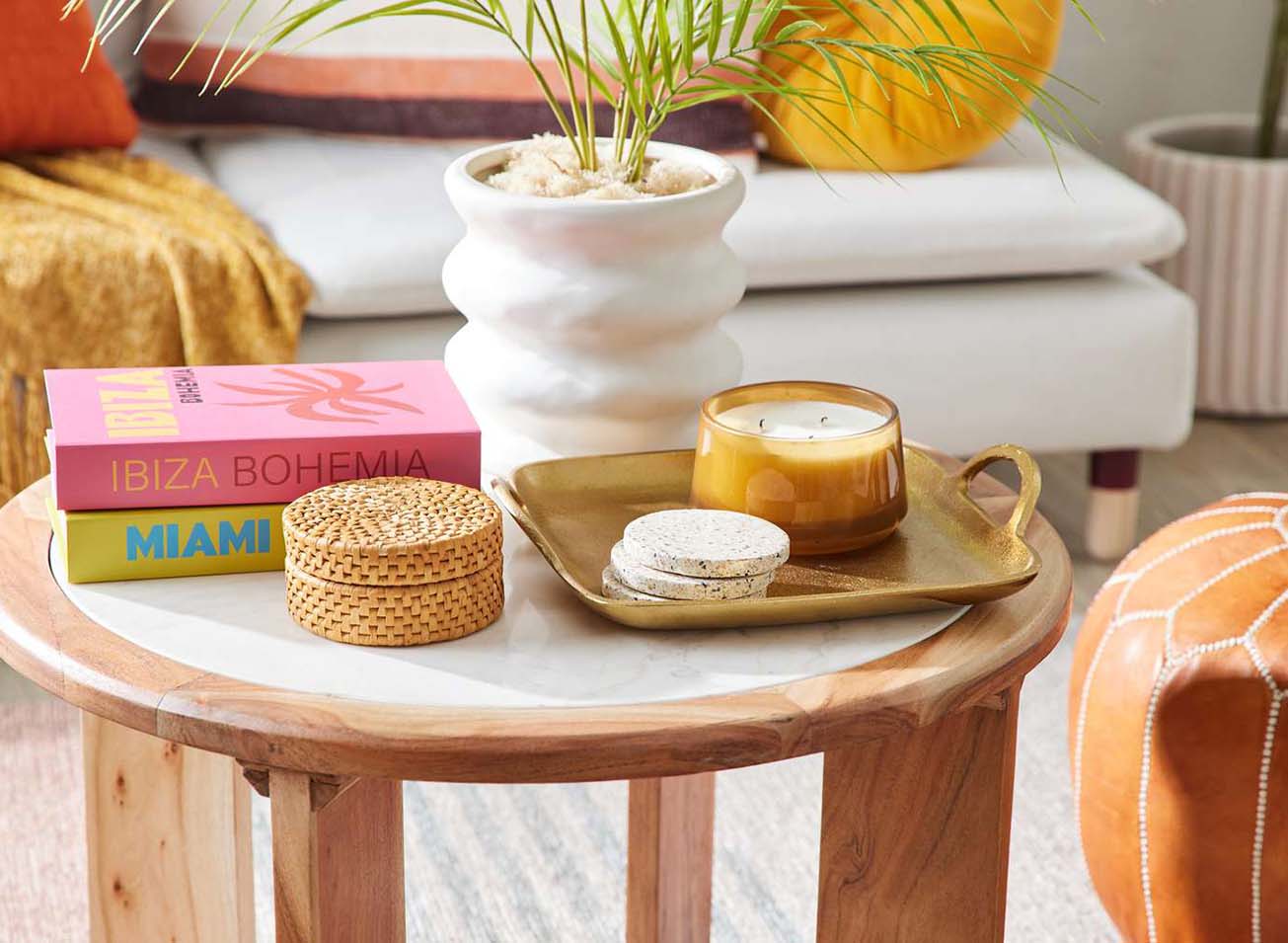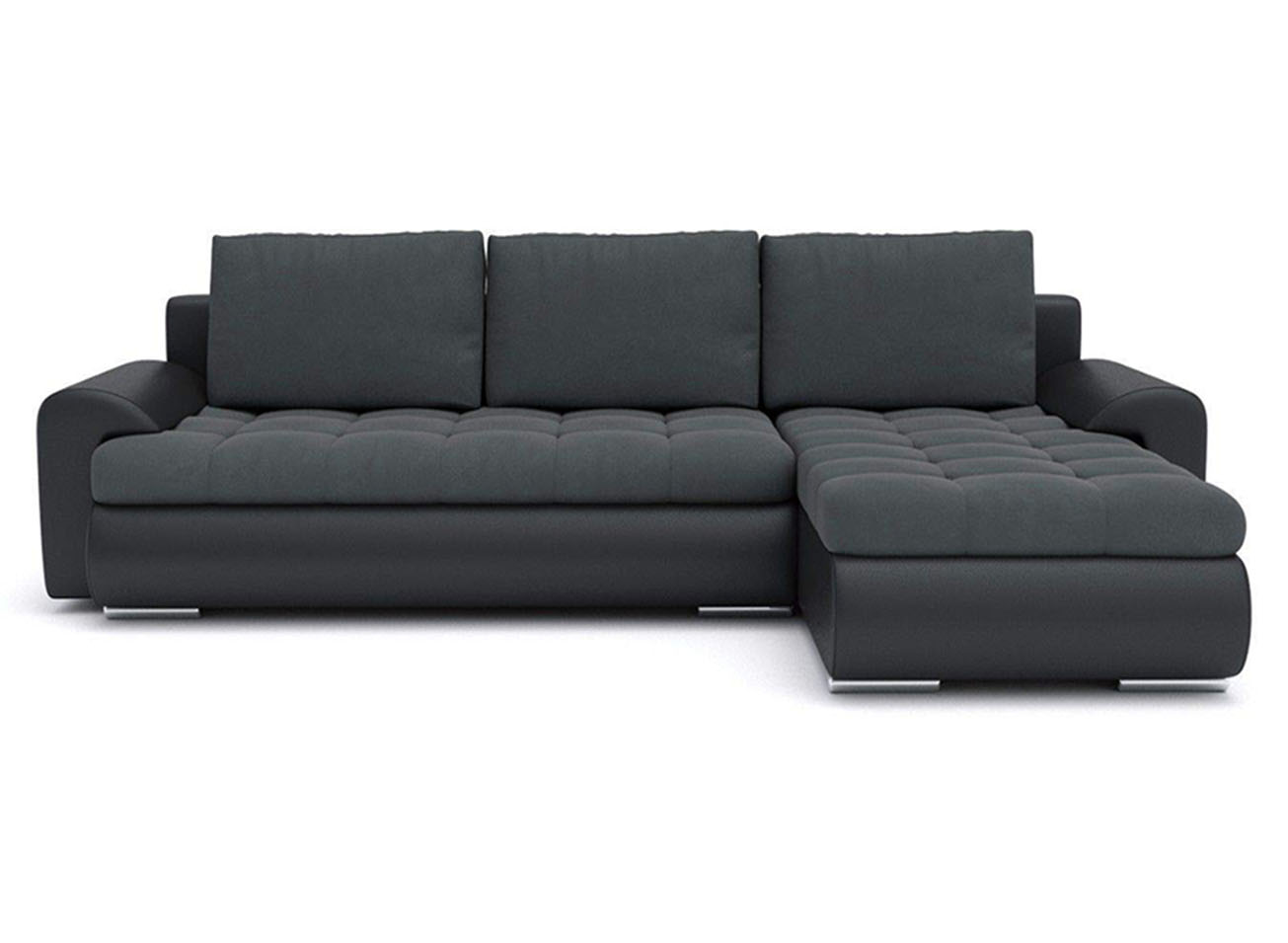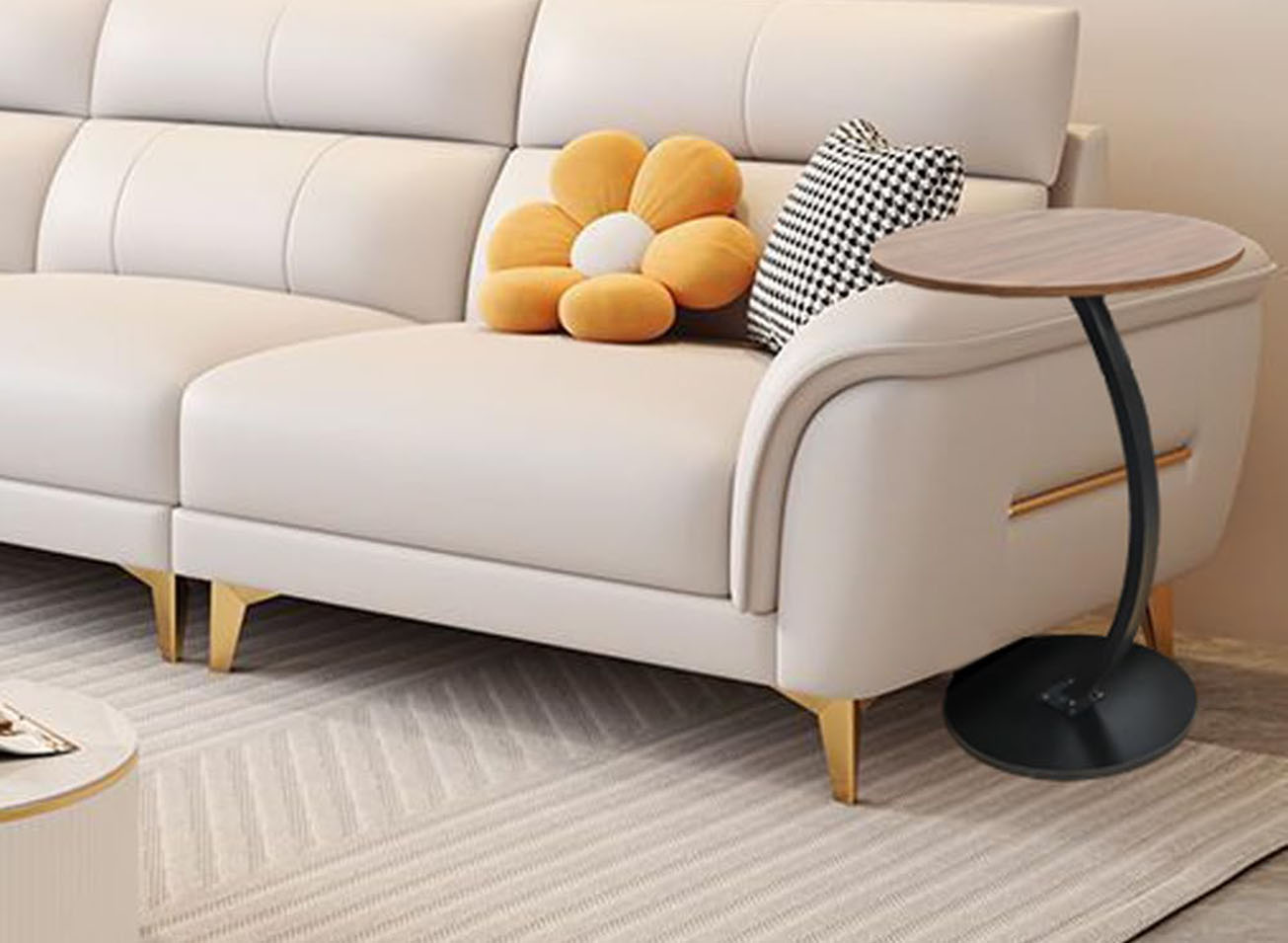In modern home design, coffee tables are not only a crucial functional piece of furniture in the living room but also a key element in showcasing personal style and aesthetics. Choosing a coffee table that is both practical and beautiful can enhance the overall ambiance of the living room and bring convenience to daily life. This article will explore in detail how to select the right coffee table, including considerations of functionality, aesthetic design, material choices, and brand recommendations, providing you with a comprehensive buying guide.
1. Functionality Considerations for Coffee Tables
1. The Importance of Practical Functions
The coffee table, as a central piece of living room furniture, serves more purposes than just providing a surface for drinks and small items. Its practicality is mainly reflected in the following aspects:
Storage Function
The storage function of a coffee table can significantly enhance the tidiness of the living room. Many modern coffee tables are designed with drawers, open shelves, or built-in storage compartments to conveniently store remotes, magazines, books, toys, and other daily items. These storage designs not only increase the utility of the coffee table but also reduce clutter in the living room. For example, coffee tables with partitioned designs can help categorize different items, ensuring that each item has its place and avoiding mess.
Flexibility
With the diversification of modern lifestyles, adjustable height or foldable coffee tables have become very popular. These tables can be adjusted according to different needs, such as raising the height to dining table level during mealtime or folding up to create more space when needed. Some coffee tables also come with built-in lift mechanisms, allowing the table to be elevated when necessary to suit different usage scenarios.
Multi-Functional Design
Some coffee tables also come with additional features, such as built-in refrigerators, USB charging ports, or wireless charging capabilities, which can greatly enhance convenience. For instance, a coffee table with a built-in refrigerator can store drinks during gatherings, while built-in charging ports can charge phones and other electronic devices, reducing the need for extra outlets. These multi-functional designs not only increase the practicality of the coffee table but also enhance the technological feel of modern homes.
2. Size and Proportions
When choosing a coffee table, considering its size and proportions is crucial. The size of the coffee table should match the sofa and the overall space in the living room. Generally, the height of the coffee table should be level with or slightly lower than the height of the sofa seat to ensure comfort. Its length and width should form a harmonious proportion with the sofa, not being too large to obstruct the living room traffic or too small to lose its utility.
Height Selection
The height of the coffee table is typically slightly lower than the sofa seat height, making it convenient to place and reach items. Generally, the height range for coffee tables should be between 40-50 centimeters, but it can be adjusted based on the sofa’s height and personal habits. If the sofa is low, a lower coffee table can be chosen; if the sofa is high, a slightly higher table can be selected.
Length and Width
The length and width of the coffee table should be determined according to the size of the sofa. Generally, the length of the coffee table should be one-half to one-third of the length of the sofa, maintaining visual balance. In terms of width, the coffee table should be wide enough to accommodate drinks and small items while not taking up excessive space.
2. Aesthetic Design of Coffee Tables
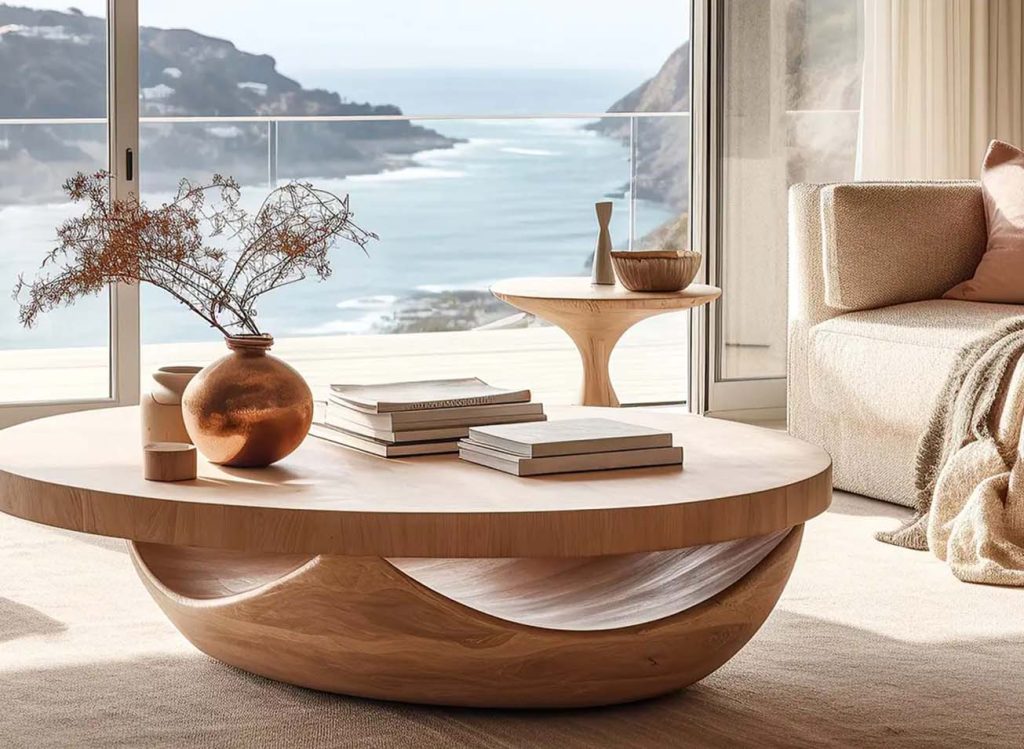
1. Choosing a Design Style
The design style of a coffee table can greatly impact the overall atmosphere of the living room. Depending on personal aesthetic preferences, coffee tables can match the following styles:
Modern Minimalist
Modern minimalist style is characterized by clean lines, smooth surfaces, and neutral colors. Coffee table designs usually emphasize functionality and practicality, avoiding excessive decoration. Brands like West Elm and CB2 offer a wide range of modern minimalist coffee tables, with simple and elegant designs that can blend seamlessly with various modern home styles.
Vintage Style
Vintage style coffee tables typically feature unique decorative details, such as carved wooden frames and retro metal legs. Vintage coffee tables can add a distinctive charm and historical touch to the living room. Anthropologie and Arhaus are notable brands offering a variety of vintage-style coffee tables, suitable for those who appreciate classic and personalized decor.
Industrial Style
Industrial style coffee tables combine rugged metal and raw wood, presenting a unique industrial vibe. Design features include exposed metal frames and rough wood textures. Brands like Restoration Hardware and Pottery Barn provide diverse industrial-style coffee tables, fitting modern urban and industrial home environments.
Scandinavian Style
Scandinavian style coffee tables emphasize functionality and minimalist aesthetics, often using natural wood and fresh, bright colors. The design focuses on detail, with simple shapes and complete functionality. Brands like HAY and Muji offer coffee tables that align with Scandinavian design principles, suitable for modern homes and those seeking a minimalist style.
2. Color and Material
The color and material of a coffee table directly affect its aesthetic effect. Common materials for coffee tables include:
Wood
Wooden coffee tables add natural warmth and are suitable for various decorative styles. The texture and color of wood can add a natural and cozy atmosphere to the living room. Rove Concepts and Crate and Barrel provide high-quality wooden coffee tables with fine craftsmanship and durability.
Glass
Glass coffee tables offer a strong sense of transparency and can enhance the sense of space, suitable for modern minimalist or Scandinavian styles. Glass material is easy to clean and provides a fresh visual effect. Wayfair and Zara Home have a wide range of glass coffee tables with various designs to meet different style needs.
Metal
Metal coffee tables have a strong modern feel, suitable for industrial or contemporary home environments. Metal materials are durable and can be combined with other materials like glass or wood to add layers of texture. Design Within Reach and Herman Miller offer high-quality metal coffee tables with unique designs and good durability.
Marble
Marble coffee tables are high-end and elegant, suitable for luxurious home environments. Marble tables usually have a refined design, smooth surfaces, and natural patterns and gloss. Kelly Wearstler and Baker Furniture offer marble coffee tables that are not only elegant and sophisticated but also highly durable.
3. Shape and Layout
The shape of a coffee table also affects its coordination with other furniture. Common shapes include:
Round
Round coffee tables are suitable for small spaces or when paired with other round furniture, such as sofas and chairs. Round coffee tables have no sharp edges, reducing the risk of collisions, making them ideal for homes with children. Article and World Market offer a variety of round coffee tables with different designs and styles.
Square
Square coffee tables are suitable for larger spaces or when paired with straight-line sofas. Square tables have distinct edges and are ideal for spacious living rooms, serving as a central focal point. Design House Stockholm and Moooi offer unique square coffee tables with modern designs that add personality to the living room.
Rectangular
Rectangular coffee tables are suitable for long sofas or as a central focal point in large spaces. Rectangular tables provide more surface area and are ideal for situations where more items need to be placed. Pottery Barn and Crate and Barrel offer rectangular coffee tables that combine practicality with aesthetics.
3. Brand Recommendations for Coffee Tables
When choosing a coffee table, the brand’s quality and design level are also important considerations. Here are some noteworthy coffee table brands and their features:
1. West Elm
West Elm is renowned for its modern minimalist design style and high-quality furniture. Its coffee table series often uses premium materials like marble and wood, with a diverse range of designs to suit different tastes. The brand’s coffee tables are known for their attention to detail, material selection, and reasonable pricing.
2. CB2
CB2 offers coffee tables with modern and chic designs, appealing to fashionable and young consumers. Its product line includes various materials and shapes, seamlessly integrating with various modern home styles. CB2 coffee tables feature bold and avant-garde designs, providing a striking visual impact for the living room.
3. Anthropologie
Anthropologie is known for its vintage and unique design coffee tables, suitable for those who appreciate personalized decor. Its coffee tables often feature handcrafted and intricate design details that enhance aesthetic appeal and add a distinctive charm to the living room.
4. Restoration Hardware
Restoration Hardware focuses on high-end luxury coffee tables, often using premium metals and wood with exquisite designs. The brand’s coffee tables are well-suited for luxurious and classic home environments, featuring elaborate decorative details and fine craftsmanship.
5. HAY
HAY represents Scandinavian design, offering coffee tables that are simple yet highly functional. Suitable for modern and Scandinavian-style homes, HAY coffee tables emphasize detail and practicality, with designs that are both stylish and durable.
6. Design Within Reach
Design Within Reach is known for its modern furniture design and high-quality materials. Its coffee tables typically feature clean, simple designs that fit well in contemporary home settings. The brand’s tables combine practicality with design, adding a touch of modern sophistication to the living room.
7. Crate and Barrel
Crate and Barrel offers a wide range of coffee tables, including wooden, glass, and metal options, with diverse styles to suit various home decors. The brand’s coffee tables combine practicality and aesthetics, offering good value for money.
4. Maintenance and Care of Coffee Tables
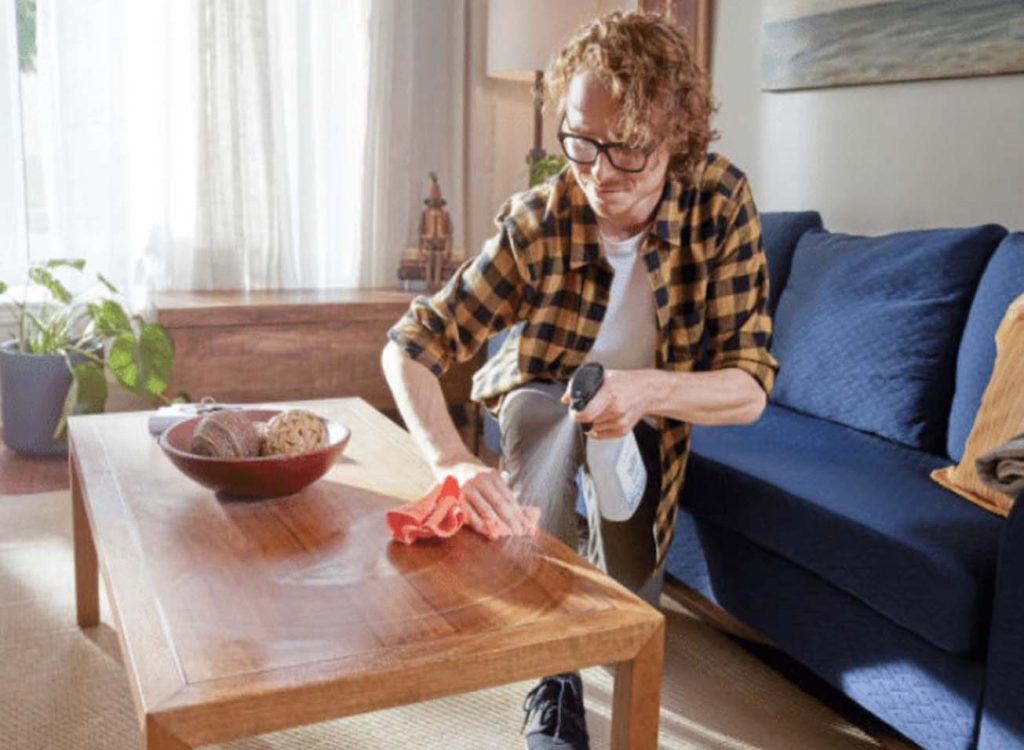
1. Cleaning Different Materials
Different materials require specific cleaning and maintenance methods. For example, wooden coffee tables need regular waxing to maintain their luster and prevent cracking; glass tables should be cleaned with specialized glass cleaners to keep their transparency and smoothness; metal tables require regular wiping to avoid rust or scratches. Understanding these maintenance methods can effectively extend the life of your coffee table.
2. Avoiding Scratches and Damage
When using a coffee table, avoid placing hot items or sharp objects directly on the surface to prevent scratches and damage. Using tablecloths or heat pads can protect the table surface from damage caused by coffee cups, hot pots, and other items. If scratches appear on the table surface, use appropriate repair tools to restore its original luster.
3. Regular Inspections
Regularly check the stability of the coffee table, especially drawers and connection points, to ensure normal use and safety. For coffee tables with moving parts, such as adjustable heights or folding functions, check the mechanical components regularly to avoid malfunctions due to prolonged use.
5. Considerations When Buying a Coffee Table
1. Measuring the Space
Before purchasing a coffee table, measure the living room space and choose a table size that fits accordingly. In addition to the table’s dimensions, consider the surrounding space to ensure that the coffee table does not obstruct the living room traffic. You can use paper or tape to simulate the table’s size on the floor to assess the actual effect.
2. Setting a Budget
Choose a coffee table based on your budget. Coffee tables vary widely in price, from a few hundred to several thousand dollars. When the budget is higher, you can opt for high-end brands and custom tables, while with a limited budget, you can look for mid-range brands and discounted promotions to get good value for money.
3. Viewing Samples
If possible, visit physical stores to view samples and experience their materials and design effects. When buying online, refer to detailed product descriptions and user reviews to understand the actual usage effect of the coffee table. Visiting physical stores allows you to directly feel the texture and size of the table, making it easier to make an appropriate choice.
Choosing a practical and aesthetic coffee table is a crucial step in enhancing the comfort and beauty of the living room. By understanding the functionality, aesthetic design, material choices, and brand recommendations of coffee tables, you can better find one that suits your home environment. Pay attention to details, consider functionality and design comprehensively, and ultimately find the coffee table that best meets your needs, making your living room a comfortable and tasteful living space.
